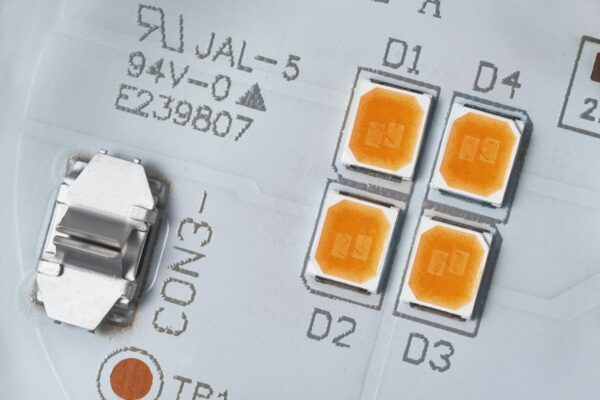What is AlN Substrate
An AlN substrate, short for Aluminum Nitride substrate, is a ceramic base material extensively used in the construction of PCBs. It is specifically designed to offer high-performance circuit solutions for applications that demand high current and high-temperature coefficients.
One of the key features of an AlN substrate is its exceptional thermal conductivity, which is approximately 170w/Mk. This high thermal conductivity enables efficient heat dissipation, making it particularly suitable for applications that generate substantial amounts of heat. This property ensures that electronic components on the PCB remain within their optimal operating temperature range, preventing overheating and potential damage.
Another important characteristic of an AlN substrate is its low expansion coefficient. This means that the substrate experiences minimal dimensional changes when subjected to temperature fluctuations. This stability is crucial for maintaining the reliability and performance of the PCB, especially in environments with varying temperatures.
Additionally, AlN substrates possess strong dielectric properties, making them ideal for applications that require electrical insulation and isolation between different circuit elements. This property ensures minimal interference or leakage of electrical signals between components on the PCB, enhancing overall performance and reliability.
Manufacturers offer AlN substrates in various shapes, sizes, thicknesses, and colors to cater to the specific requirements of different applications. This versatility allows for customization and flexibility in PCB design.
AlN substrates find extensive use in industries such as radio frequency, automotive, LED converter, and power companies. They are commonly employed in applications that demand high-frequency performance, such as RF circuits, as well as in industries where high-power and high-temperature conditions are present, such as automotive and power electronics.
Frequently Asked Questions
What Is the Cheapest PCB Surface Finish
The most economical PCB surface finish is Hot Air Solder Leveling.
What Is the Best Substrate for PCB
Polytetrafluoroethylene, also known as Teflon, is widely considered the optimal substrate for PCBs. Its excellent temperature stability and low dissipation make it the preferred choice for flex PCB materials. This material is commonly used in various applications such as cruise control, power amplifiers, antennas, and aerospace telemetry.
What Is the Cheapest PCB Substrate
The least expensive PCB substrate is typically FR4 laminated fiberglass, which is also the most commonly used material.
What Are the Different Types of PCB Substrates
Materials commonly utilized in PCB substrates include FR-1, G-10, PTFE, alumina, and Kapton. Laminates are composed of CTE, PTFE, CEM, and various other compounds. In cases where high performance is not a crucial factor for the PCB, lightweight polyester may be a suitable option.
What Is AlN Used For
Aluminum Nitride is a highly valuable material due to its unique combination of electrical insulation and high thermal conductivity. As a result, AlN finds extensive application in various high-power electronic devices, particularly in heat sink and heat spreader applications.
What Is the Most Common Substrate for PCB
Historically, the most commonly used substrate for PCBs has been fiberglass. This material is preferred due to its affordability, reliability, and ability to provide a sturdy foundation for the PCB.
What Color Is PCB Substrate
The PCB substrate can come in various colors such as white, blue, black, yellow, and red. These colors are commonly known as PCB color codes. Different types of modern PCBs have specific colors assigned to them. For instance, the motherboards of PCs are typically made in green epoxy.





